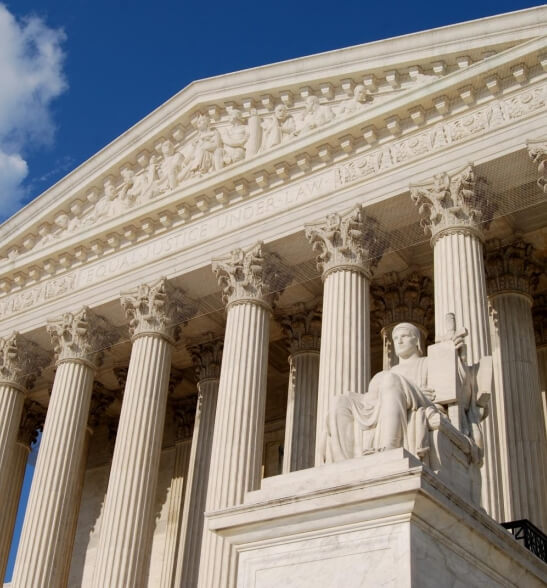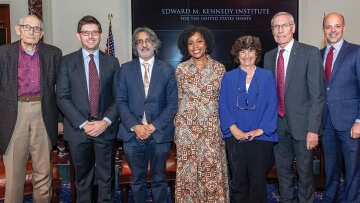Supreme Court Terms
Sign up for our newsletterAn initiative to address the polarization and partisanship created by life tenure for Supreme Court justices.
The Supreme Court holds immense power in our Constitutional system. However, as growing levels of partisan polarization and decreasing public trust have come to characterize the American political landscape, the Court has also become increasingly controversial, with Americans’ views of its legitimacy divided along ideological lines. One often-overlooked factor exacerbating these concerns is the fact that Justices today live far longer — and thus serve far longer — than the Framers are likely to have imagined. Life tenure, as operates today, has raised the stakes of each new Supreme Court nomination, leading to a wide range of undesirable outcomes.
Moving to 18-year terms for Supreme Court Justices could help realign the Court with the Founders’ vision and reduce the partisan contentiousness of the appointments process. This recommendation, included in the Our Common Purpose report, was subsequently expanded upon.
In 2021, the White House’s Presidential Commission on the Supreme Court of the United States examined this proposed reform and noted that it has substantial bipartisan support. However, that Commission also noted a lack of consensus as to whether term limits may be enacted by Congress by statute or whether a constitutional amendment is required. It also outlined numerous important design questions that would need to be resolved for any effort to enact term limits to be viable. For instance: how will a transition to term limits be handled? What will be the scope of justices’ post-term duties? The answers to these questions have outsize importance because they may impact whether a term limits statute would be constitutional.
Between June 2022 and March 2023, the Academy convened a working group of political scientists and legal scholars with views across the ideological spectrum to try to resolve these and other crucial questions.

The Case for Supreme Court Term Limits
A Paper by the U.S. Supreme Court Working Group
Publication Launch, Discussion, and Coverage
The publication was launched in October 2023 at an event co-hosted by the Academy and the Edward M. Kennedy Institute for the Senate featuring Professor Akhil Amar, Professor Charles Fried, journalist Kimberly Atkins Stohr, Fix the Court Executive Director Gabe Roth, and Judge Patti Saris. The discussion (which can be viewed online) covered an array of topics, including a schedule for presidential nominations, public confidence in the judiciary, judicial preparedness, service after the Supreme Court, and the role the Senate could play in enacting such a reform.
News Coverage - Supreme Court Term Limits
To learn more about this initiative, please contact Jess Lieberman.

Establish, through federal legislation, eighteen-year terms for Supreme Court justices with appointments staggered such that one nomination comes up during each term of Congress. At the end of their term, justices will transition to an appeals court or, if they choose, to senior status for the remainder of their life tenure, which would allow them to determine how much time they spend hearing cases on an appeals court.



